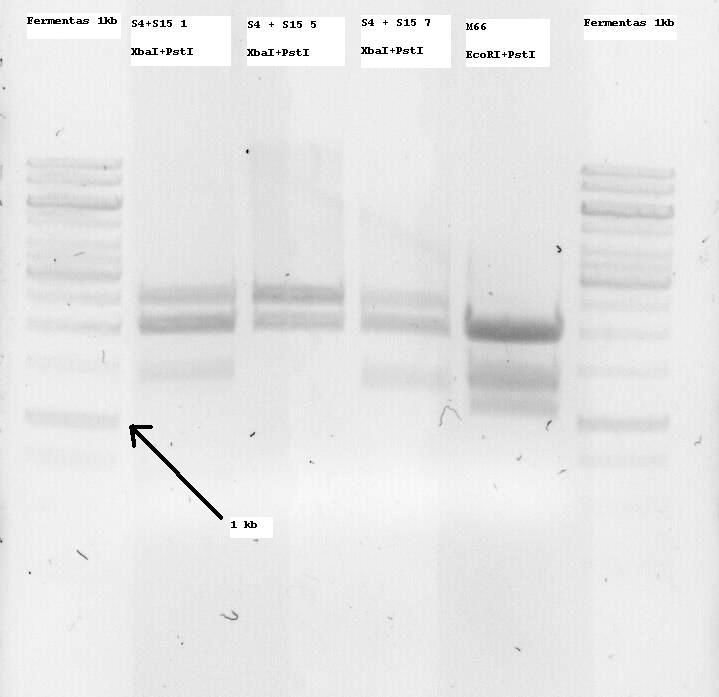Team:Freiburg/Notebook/6 September
From 2011.igem.org
(Difference between revisions)
(→Miniprep) |
(→Troubleshooting of the modified Lysis genes K124017) |
||
| Line 161: | Line 161: | ||
<br> | <br> | ||
| - | + | ====Gel Extraction==== | |
| + | |||
| + | <br> | ||
| + | |||
| + | '''Gel Extraction Kit''' | ||
| + | |||
| + | Qiagen Kit | ||
| + | |||
| + | |||
| + | {| style="border-spacing:0;" | ||
| + | | style="border:0.0069in solid #00000a;padding-top:0in;padding-bottom:0in;padding-left:0.075in;padding-right:0.075in;"| Name: Theo | ||
| + | |||
| + | |||
| + | |||
| + | | style="border:0.0069in solid #00000a;padding-top:0in;padding-bottom:0in;padding-left:0.075in;padding-right:0.075in;"| Date: 6.9.2011 | ||
| + | |||
| + | |- | ||
| + | | colspan="2" style="border:0.0069in solid #00000a;padding-top:0in;padding-bottom:0in;padding-left:0.075in;padding-right:0.075in;"| Continue from Experiment: Troubleshooting of the modified Lysis genes K124017 (5.9.2011, Theo) | ||
| + | |||
| + | |||
| + | |||
| + | |||
| + | |- | ||
| + | | colspan="2" style="border:0.0069in solid #00000a;padding-top:0in;padding-bottom:0in;padding-left:0.075in;padding-right:0.075in;"| Project Name: Troubleshooting of the modified Lysis genes K124017 | ||
| + | |||
| + | |} | ||
| + | '''Procedure''' | ||
| + | |||
| + | |||
| + | 1.Excise the DNA fragment from the agarose gel with a clean, sharp scalpel. | ||
| + | |||
| + | 2.Weigh the gel slice in a colorless tube. Add 3 volumes Buffer QG to 1 volume gel (100 mg ~ 100 μl). For >2% agarose gels, add 6 volumes Buffer QG. | ||
| + | |||
| + | 3.Incubate at 50°C for 10 min (or until the gel slice has completely dissolved). Vortex the tube every 2–3 min to help dissolve gel. | ||
| + | |||
| + | 4.After the gel slice has dissolved completely, check that the color of the mixture is yellow (similar to Buffer QG without dissolved agarose). If the color of the mixture is orange or violet, add 10 μl 3 M sodium acetate, pH 5.0, and mix. The color of the mixture will turn yellow. | ||
| + | |||
| + | 5.Add 1 gel volume of isopropanol to the sample and mix. | ||
| + | |||
| + | 6.Place a QIAquick spin column in ␣a provided 2 ml collection tube or into ␣a vacuum manifold. | ||
| + | |||
| + | 7.To bind DNA, apply the sample to the QIAquick column and ␣centrifuge for 1 min or ␣apply vacuum to the manifold until all the samples have passed through the column.␣Discard flow-through and place the QIAquick column back into the same tube. For sample volumes of >800 μl, load and spin/apply vacuum again. | ||
| + | |||
| + | 8.If the DNA will subsequently be used for sequencing, in vitro transcription, or microinjection, add 0.5 ml Buffer QG to the QIAquick column and␣centrifuge for 1 min or␣apply vacuum.␣Discard flow-through and place the QIAquick column back into the same tube. | ||
| + | |||
| + | 9.To wash, add 0.75 ml Buffer PE to QIAquick column and ␣centrifuge for 1 min or␣apply vacuum.␣Discard flow-through and place the QIAquick column back into the same tube. | ||
| + | |||
| + | |||
| + | Note: If the DNA will be used for salt-sensitive applications (e.g., sequencing, blunt-ended ligation), let the column stand 2–5 min after addition of Buffer PE. | ||
| + | |||
| + | |||
| + | 10.Centrifuge the QIAquick column once more in the provided 2 ml collection tube for 1 min at 17,900 x g (13,000 rpm) to remove residual wash buffer. | ||
| + | |||
| + | 11.Place QIAquick column into a clean 1.5 ml microcentrifuge tube. | ||
| + | |||
| + | 12.To elute DNA, add 50 μl Buffer EB (10 mM Tris·Cl, pH 8.5) or water to the center of the QIAquick membrane and centrifuge the column for 1 min. For increased DNA concentration, add 30 μl Buffer EB to the center of the QIAquick membrane, let the column stand for 1 min, and then centrifuge for 1 min. After the addition of Buffer EB to the QIAquick membrane, increasing the incubation time to up to 4 min can increase the yield of purified DNA. | ||
| + | |||
| + | 13.If the purified DNA is to be analyzed on a gel, add 1 volume of Loading Dye to 5 volumes of purified DNA. Mix the solution by pipetting up and down before loading the gel. | ||
| + | |||
| + | <br> | ||
==<span style="color:grey;">Precipitator</span>== | ==<span style="color:grey;">Precipitator</span>== | ||
Revision as of 17:20, 7 September 2011
 "
"
 Contact
Contact 












